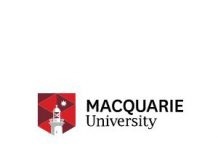Lean is just one method of continuous improvement and there are a range of others that are commonly used in higher education (HE). We close our lean series with three viewpoints from HE professionals and consultants on different ways of applying lean and its alternatives.
Earlier in this series, Edinburgh Napier’s Steve Yorkstone described how lean relates to other commonly used continuous improvement methods including agile and systems thinking.
Surprisingly, despite the different terminology, Steve suggests that the only fundamental difference between lean and agile is their origins – one from manufacturing and the other from IT.
But even where lean is used as the main method of continuous improvement, it can be applied in a variety of ways.
To conclude our series, we hear from a university in Ireland that is applying lean in a orthodox way and an institution in Scotland taking a less traditional approach. We also learn more about service design, which is being used in some universities to focus more on the needs of a service user.
Agile, but actually lean
University College Dublin (UCD) is using lean as philosophical and methodological underpinning for supporting a key part of the university’s strategy.
Despite the title UCD Agile, the university is following the standard approach to lean projects, identifying candidate business processes in need of enhancement, getting team leads and sponsors, training teams, running the projects etc. Read Michael Sinnott’s blogpost to find out more about this project.
Lean with a twist
The University of Strathclyde’s approach highlights how lean is not a rigid concept. The team there has embraced lean’s respect for people and continuous improvement ethos, but recognises that data and evidence are also vital components of any transformational change approach.
Strathclyde’s Heather Lawrence blogs about their approach to continuous improvement, which she describes as lean “with a twist”.
Improvement by design
Finally, consultant Jean Mutton explores service design methods as an alternative approach to continuous improvement. Like lean, they have a people-centric approach, with an emphasis on empathy and traditional design techniques to solve problems.
Whatever method you end up using, we hope that you have found this series useful in finding out more about lean and other improvement techniques. Further resources are available on the Lean HE website, which also aims to support staff with alternative improvement approaches.
This post concludes our series on lean, which we have delivered in conjunction with Lean HE. You can view the series in its entirety on the Lean HE page.








